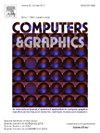CausalPrism:一种基于子组的因果异质性探索的可视化分析方法
IF 2.8
4区 计算机科学
Q2 COMPUTER SCIENCE, SOFTWARE ENGINEERING
引用次数: 0
摘要
在因果推理中,从观察数据中估计异质性治疗效应(HTEs)对于理解不同亚群对治疗的反应至关重要,这在精准医疗和定向广告等领域有着广泛的应用。然而,现有的关于HTE、子组发现和因果可视化的工作不足以解决两个挑战:首先,潜在子组的绝对数量和平衡多个目标(例如,高效果和低方差)的必要性构成了相当大的分析挑战。第二,有效的子群分析必须遵循用户指定的分析目标,并提供可验证的因果结果。为此,我们提出了一种基于子组的因果异质性探索的可视化分析方法。具体而言,我们首先将因果子群发现问题表述为一个约束多目标优化问题,并采用启发式遗传算法学习由可解释规则描述的最优子群的帕累托前沿。结合该模型,我们开发了一个原型系统CausalPrism,该系统结合了表格可视化,多属性排名和不确定性图,以支持用户交互式地探索和排序子组并解释治疗效果。定量实验验证了所提出的模型可以有效地挖掘因果子组,优于最先进的HTE和子组发现方法,案例研究和专家访谈证明了该系统的有效性和可用性。代码可在OSF获得。本文章由计算机程序翻译,如有差异,请以英文原文为准。

CausalPrism: A visual analytics approach for subgroup-based causal heterogeneity exploration
In causal inference, estimating Heterogeneous Treatment Effects (HTEs) from observational data is critical for understanding how different subgroups respond to treatments, with broad applications such as precision medicine and targeted advertising. However, existing work on HTE, subgroup discovery, and causal visualization is insufficient to address two challenges: first, the sheer number of potential subgroups and the necessity to balance multiple objectives (e.g., high effects and low variances) pose a considerable analytical challenge. Second, effective subgroup analysis has to follow the analysis goal specified by users and provide causal results with verification. To this end, we propose a visual analytics approach for subgroup-based causal heterogeneity exploration. Specifically, we first formulate causal subgroup discovery as a constrained multi-objective optimization problem and adopt a heuristic genetic algorithm to learn the Pareto front of optimal subgroups described by interpretable rules. Combining with this model, we develop a prototype system, CausalPrism, that incorporates tabular visualization, multi-attribute rankings, and uncertainty plots to support users in interactively exploring and sorting subgroups and explaining treatment effects. Quantitative experiments validate that the proposed model can efficiently mine causal subgroups that outperform state-of-the-art HTE and subgroup discovery methods, and case studies and expert interviews demonstrate the effectiveness and usability of the system. Code is available at OSF.
求助全文
通过发布文献求助,成功后即可免费获取论文全文。
去求助
来源期刊

Computers & Graphics-Uk
工程技术-计算机:软件工程
CiteScore
5.30
自引率
12.00%
发文量
173
审稿时长
38 days
期刊介绍:
Computers & Graphics is dedicated to disseminate information on research and applications of computer graphics (CG) techniques. The journal encourages articles on:
1. Research and applications of interactive computer graphics. We are particularly interested in novel interaction techniques and applications of CG to problem domains.
2. State-of-the-art papers on late-breaking, cutting-edge research on CG.
3. Information on innovative uses of graphics principles and technologies.
4. Tutorial papers on both teaching CG principles and innovative uses of CG in education.
 求助内容:
求助内容: 应助结果提醒方式:
应助结果提醒方式:


